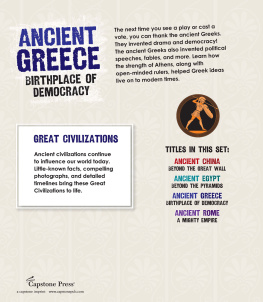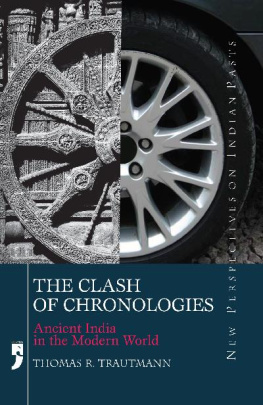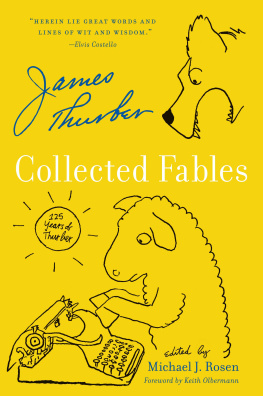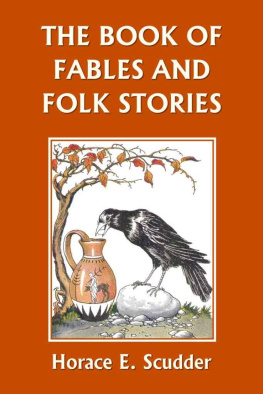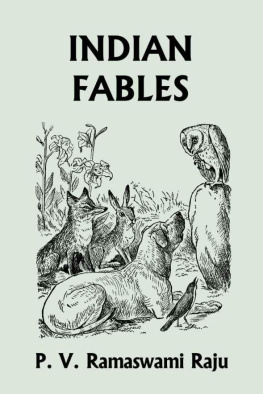CHAPTER I.
DEFINITION OF FABLE.
Table of Contents
'Read my little fable,
He that runs may read.'
Tennyson : The Flower.
'As clear as a whistle.'
Byron : The Astrologer.
The term 'fable' is used in two senses, with two distinctive meanings.
First, as fabul, it is employed to denote the myths or fictions which, by the aid of imagination and superstition, have clouded, or have become blended with, the history of the remote past. Such are the stories related of Scandinavian and Grecian heroes and gods; beings, some of whom doubtless had an actual human existence, and were wise and valiant and powerful, or the reverse, in their day, but around whose names and persons have clustered all the marvellous legends that are to be found in mythological lore. The better name for these is 'romance.'
Secondly, as fabell, it is used to signify a special branch of literature, in which the imagination has full play, altogether unassisted by superstition in any shape or form. The fabulist confers the powers or gifts of reason and speech on the humbler subjects over whom he exercises sway, and so has ample scope for his imaginative faculty; but there is no attempt on his part at any serious make-believe in his inventions. On the contrary, there is a tacit understanding between him and his hearers and readers, that what he narrates is only true in the sense of its application to corresponding circumstances in human life and conduct.
It is with fable as understood in this latter sense that we propose to deal.
The Fable or Apologue has been variously defined by different writers. Mr. Walter Pater, paraphrasing Plato's definition, says that 'fables are medicinable lies or fictions, with a provisional or economized truth in them, set forth under such terms as simple souls can best receive.' The harshness of both these definitions is scarcely relieved by their quaintness. To assert that the fable is a lie or a falsehood does not fairly represent the fact. A lie is spoken with intent to deceive. A fable, in its relation, can bear no such construction, however exaggerated in its terms or fictitious in its characters. The meanest comprehension is capable of grasping the humour of the situation it creates. Even the moral that lurks in the narration is often clear to minds the most obtuse. This is at least true of the best fables.
Dr. Johnson, in his 'Life of Gay,' remarks that 'A fable or epilogue seems to be, in its genuine state, a narrative in which beings irrational, and sometimes inanimatequod arbores loquantur, non tantum ferare, for the purpose of moral instruction, feigned to act and speak with human interests and passions.'
Dodsley says that ''tis the very essence of a fable to convey some moral or useful truth beneath the shadow of an allegory.'
These various definitions or descriptions apply more especially to the sopian fable (and it is with this that we are dealing at present), which is par excellence the model of this class of composition. Steele declares that 'the virtue which we gather from a fable or an allegory is like the health we get by hunting, as we are engaged in an agreeable pursuit that draws us on with pleasure, and makes us insensible of the fatigues that accompany it.' 'Faerie Queen' of Spenser, rather than to the fable as the term is generally understood, otherwise the simile is somewhat inflated.
One more definition may be attempted:
The sopian fable or apologue is a short story, either fictitious or true, generally fictitious, calculated to convey instruction, advice or reproof, in an interesting form, impressing its lesson on the mind more deeply than a mere didactic piece of counsel or admonition is capable of doing. We say a short story, because if the narration is spun out to a considerable length it ceases to be a true fable in the ordinary acceptation of the term, and becomes a tale, such, for example, as a fairy tale. Now, a fairy or other fanciful tale usually or invariably contains some romance and much improbability; it often deals largely in the superstitious, and it is not necessarily the vehicle for conveying a moral. The very opposite holds good of a fable. Although animals are usually the actors in the fable, there is an air of naturalness in their assumed speech and actions. The story may be either highly imaginative or baldly matter-of-fact, but it never wanders beyond the range of intuitive (as opposed to actual or natural) experience, and it always contains a moral. In a word, a fable is, or ought to be, the very quintessence of common sense and wise counsel couched in brief narrative form. It partakes somewhat of the character of a parable, though it can hardly be described as a parable, because this is more sedate in character, has human beings as its actors, and is usually based on an actual occurrence.
Though parables are not fables in the strict and limited meaning of the term, they bear a close family relationship to them. Parables may be defined as stories in allegorical dress. The Scriptures, both old and new, abound with them. The most beautiful example in the Old Testament is that of Nathan and the ewe lamb, in which David the King is made his own accuser. This was a favourite mode of conveying instruction and reproof employed by our Lord. Christ often 'spake in parables'; and with what feelings of reverential awe must we regard the parables of the Gospels, coming as they did from the lips of our Saviour!

Footnote
Table of Contents
'Plato and Platonism,' by Walter Pater. London: Macmillan and Co., 1893, p. 225.
Aphthonius flourished at Antioch, at what time is uncertain. Forty of his sopian fables, with a Latin version by Kimedoncius, were printed from a MS. in the Palatine Library at the beginning of the seventeenth century. 'The sopian Fable,' by Sir Brooke Boothby, Bart. Edinburgh: Constable and Co., 1809. Preface, p. xxxi.
'Even trees speak, not only wild beasts.'Phdrus, Book i., Prologue.
'Essay on Fable.'
'Fables Original and Selected,' by G. Moir Bussey. London: Willoughby and Co., 1842.
'The Fables of sop,' as first printed by William Caxton in 1484. London: David Nutt, 1889, vol. i., p. 204.
'The Tatler,' No. 147, vol. iii., p. 205.
2 Samuel xii. 1-7.











